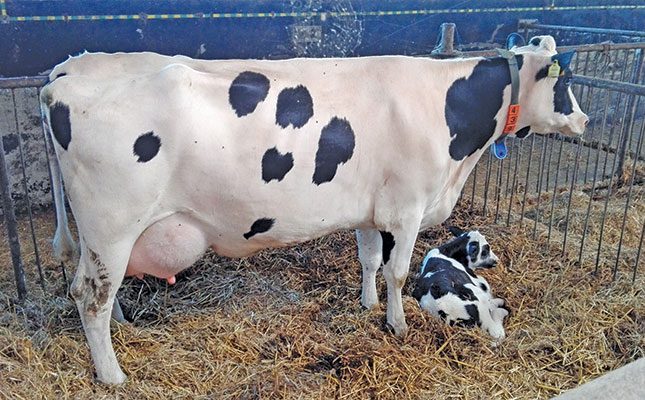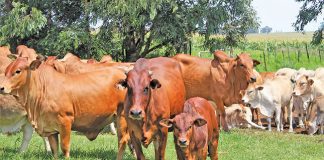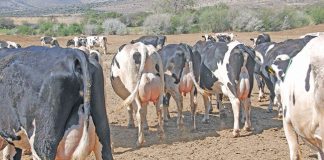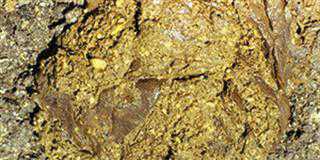
Photo: FW Archive
There is a need to transfer technology to emerging and smallholder cattle farmers to minimise their challenges in production. Low reproduction rates have been a problem experienced in South Africa’s communal and emerging cattle herds.
Around the world, there is increased interest in gender-preselected calves, using sexed semen straws in dairy and beef cattle livestock farming when conducting artificial insemination (AI).
In a dairy operation, female animals have greater value than bulls, as bulls can obviously
not provide milk. However, for beef cattle farmers, the demand for gender-preselected
calves differs depending on the type of operation.
Moreover, heifer calves born as co-twins to bull calves have a high rate of freemartins, which are genetically female but have many characteristics of a male. (Freemartins are also infertile.)
Unfortunately, due to emerging cattle farmers’ lack of knowledge of modern advanced reproductive protocols/management techniques available to improve production, they are currently unable to produce the desired gender of calves.
In an attempt to correct this, Dr Masindi Mphaphathi of the Agricultural Research Council’s Animal Production Institute collaborated with the Gauteng Department of Agriculture and Rural Development to conduct a project that targeted to benefit emerging dairy and beef cattle farmers in Gauteng.
This was done as part of its germplasm conservation and reproductive biotechnologies programme.
The project, launched in 2021, was based on the premise that emerging dairy and beef cattle farmers could benefit from gender preselection through the use of sexed semen if utilised through assisted reproductive biotechnologies, such as AI.
These biotechnologies would help increase genetic merit and/ or phenotypic gain for the production traits of desired gender calves. Sexed semen allows cattle farmers to predetermine the sex of calves from a specific dam and sire, resulting in production goals being met within cattle herds.
The project aimed to assess the application of AI on synchronised dairy and beef cows using frozen-thawed sexed and non-sexed semen from Holstein Friesian and Angus bulls, with specific objectives to compare oestrous synchronisation response, conception rate and gestation loss in dairy and beef cows inseminated with sexed and non-sexed semen.
The hope was also to understand the physiological mechanisms that lead to embryonic and foetal mortality in cattle and the development of management strategies to narrow these losses.
The study
The study was conducted on 227 cows (130 dairy, 97 beef) in Gauteng between 2021 and 2022. The cows were kept in their natural environments (on farmers’ land), and were at least 90 days post-partum and tested negative for contagious abortion.
They were synchronised and maintained on the same nine-day synchronisation protocol. They were then artificially inseminated with frozen-thawed X-sexed (female) semen or unsexed semen from eight sires (four Holstein and Friesian bulls, and four Angus bulls). Samples were fertility-tested.
Following AI, the cows were kept separate from the bulls for seven to 10 days. Cows were tested for pregnancy and pregnancy loss on days 35, 65 and 95 after AI. In dairy cows, the conception rate was higher than in beef cows on day 35, with a 61,9% conception rate in dairy cows inseminated with sexed semen, led marginally by dairy cows inseminated with unsexed semen (62%).
Beef cows inseminated with sexed semen saw a 56% conception rate, while beef cows inseminated with unsexed semen showed a conception rate of only 52,2%.
On day 95, dairy cows inseminated with sexed semen showed a conception rate of 41,4%, while those inseminated with unsexed semen had a conception rate of 48,5%. In beef cattle, cows inseminated with sexed semen had a conception rate of 38%, while those inseminated with unsexed semen showed a conception rate of 37%.
Between days 35 and 65, dairy cows inseminated with sexed semen saw a pregnancy loss of 33,3%, while those inseminated with unsexed semen showed a loss of 18,2%. In beef cattle, sexed-semen recipients saw a loss of 28,6%, while unsexed-semen recipients had a loss of 29,2%.
Between days 66 and 95, sexed-semen recipient dairy cows saw a pregnancy loss of 7,7%, while unsexed-semen recipients had a loss of 8,3%. In beef cows, sexed-semen recipients showed a loss of 5%, while unsexed-semen recipients saw no loss.
According to Mphaphathi et al, the study shows that conception rates in dairy cows that were inseminated with sexed semen were lower than those of dairy cows inseminated with unsexed semen.
However, in beef cows, the opposite was marginally true. This means that small-scale and emerging farmers can use sexed semen, particularly on beef cattle, to produce gender-specific calves, without concern of dropping conception rates.
The study stresses, however, the importance of education and information, the use of proper artificial insemination techniques, as well as the use of synchronisation. This may make the use of sexed semen unrealistic for many small-scale and emerging farmers, as costs may be prohibitive.











